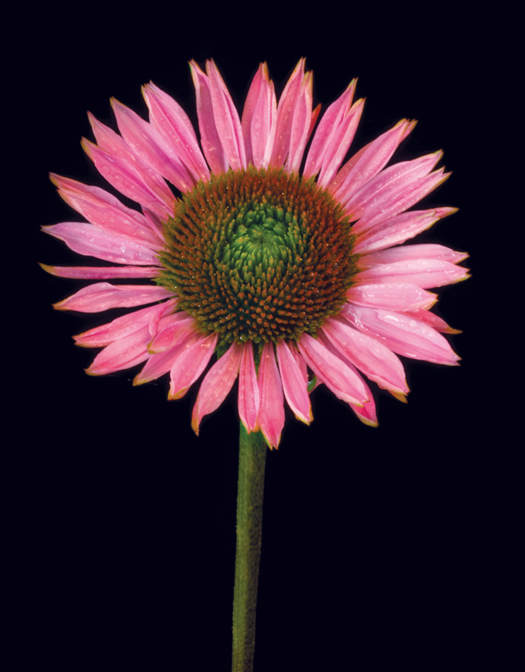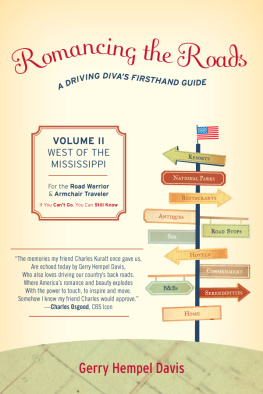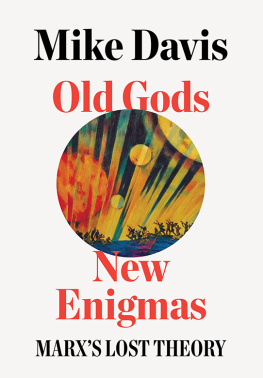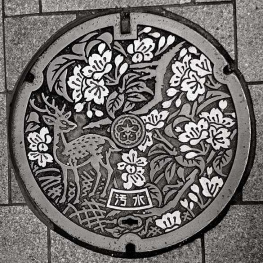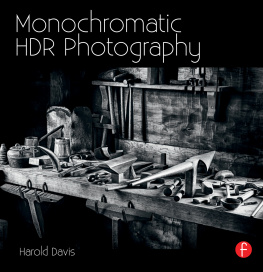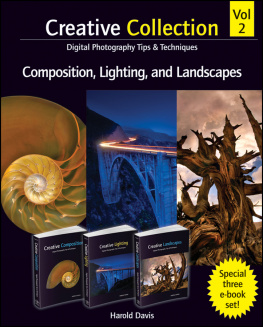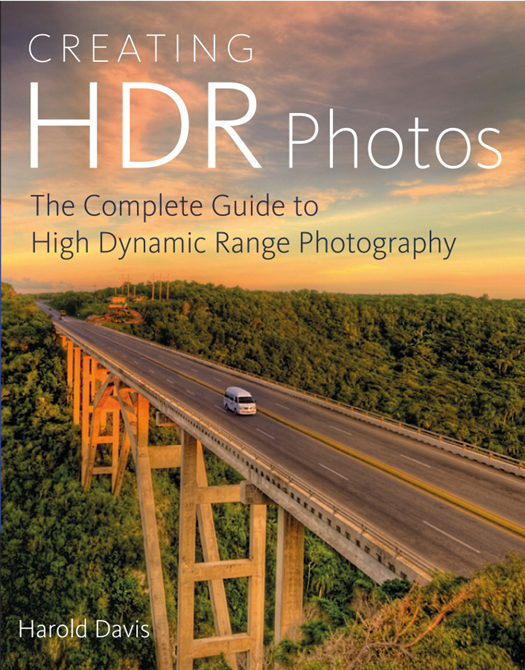All rights reserved. Published in the United States by Amphoto Books, an imprint of the Crown Publishing Group, a division of Random House, Inc., New York.
AMPHOTO BOOKS and the Amphoto Books logo are registered trademarks of Random House, Inc.
Library of Congress Cataloging-in-Publication Data is available upon request.
Special thanks to Mark Brokering, Matt Buchanan, Gary Cornell, Martin Davis, Virginia Davis, Barbara Hopper, Julie Mazur, Jess Morphew, and Matt Wagner.
This book is dedicated to Julian, Nicky, Mathew, and Katie Rose.
Dear children, you have taught me so much. I would not be the person or photographer I am today without you. We are ohana and I love you all very much.
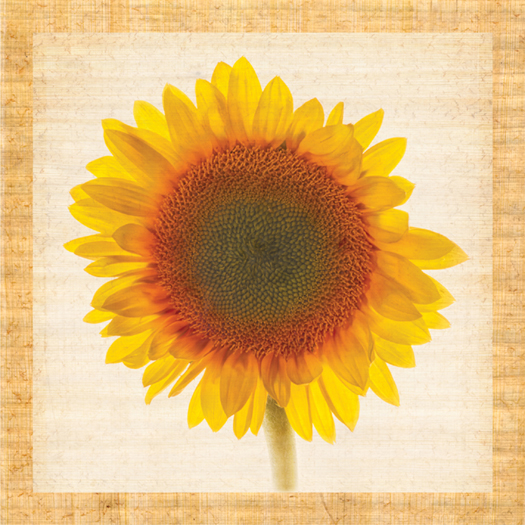
CONTENTS
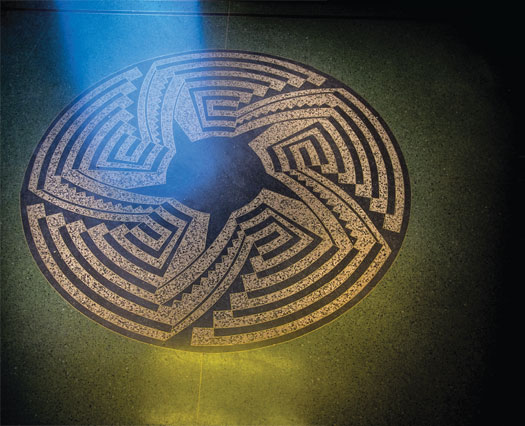
INTRODUCTION
S o just what is HDR? Youve probably heard photographers talking about HDR, and youve probably seen some HDR photos that show impossibly vivid, cloudy skies floating above gritty urban landscapes. Also, you may think that HDR is something very technical and difficult to use. Well, these preconceptions are not true because HDR is easy and fun, and can be used to create very subtle imagery.
If you havent already used HDR to enhance your photographs, or if you have and you didnt get the results you want, then read on. Creating HDR Photos will explain what HDR is in detail. Youll find out how easy it is to use HDR, have fun while doing so, and add a whole new level of color, depth, and interest to your photos.
If you are already experienced with HDR, then Ill show you some different approaches to HDR and give detailed tips along the way. Ill also tell you more about HDR, its history from the days of film photography, and how folks preconceptions about HDR might not be the whole story.
First, let me get some myths out of the way. Theres a great deal more to HDR than the urban grunge look. In fact, you wont see many urban grunge photos in this book. Of course, if you like the urban grunge look, then go ahead and use HDR to create images based upon it! But there are other ways to use HDR in your photos, and many HDR effects are quite subtle and natural.
In fact, HDR that is carefully and selectively used to enhance photos is one of my secret weaponsand I am letting you in on my secret in this book. Most people looking at a natural-looking HDR image will notice that there is something special about the photo, but they dont say to themselves, Hmm, that must be HDR.
Ive heard from a number of students who have learned my techniques in the workshops I give that theyve used the secret weapon of naturalistic HDR to win prizes in competitions and be accepted into juried exhibitions.
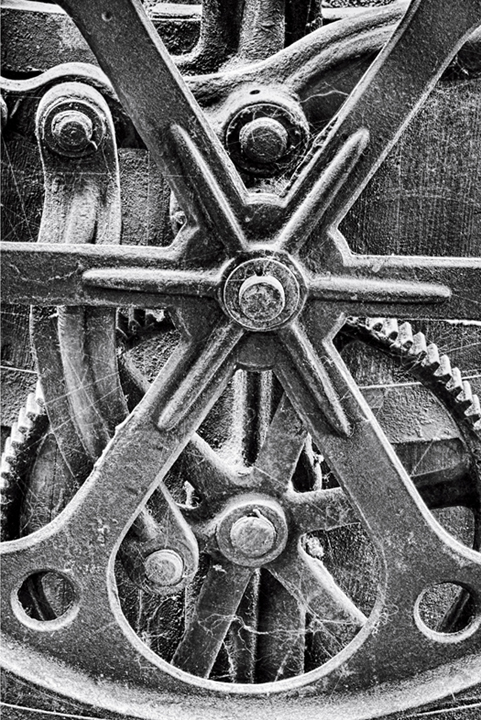
CROUCHING DOWNon the dusty floor of an old barn in Californias wine country, I was intrigued by the play of light and shadow on the side of an old, abandoned piece of machinery. It turned out to be an old-fashioned industrial clothes washing machine that used to be called a wringing mangle, or sometimes simply a wringer.
Personally, I am a sucker for the shapes and forms that old machines can makeand I dont care that much what they were used for. I knew in this case that I would never be able to capture the composition I wanted using conventional photography because the variation between the soft, white dust and cobwebs, and the hard edges of the old machinery was simply too great. So I hunkered down on the dirty floor and shot three images with HDR in mind.
I processed the three exposures using Nik HDR Efex Pro, and then converted the image to black and white by using a Photoshop adjustment layer.
105mm macro lens, three exposures at 8 seconds, 15 seconds, and 30 seconds, each exposure at f/36 and ISO 100, tripod mounted; exposures combined using Nik HDR Efex Pro, and converted to monochrome using a Photoshop Black & White adjustment layer.
If you cant take one of my workshops, then this book is the next best thing. The good news is that there is nothing complicated or difficult about HDR. In this book, Ill show you how to create your own striking HDR imagery from almost any subject matterand once you get started using these techniques, youll be able to apply them to any photo you take.
Of course, there are some other books about HDR out there. But whats different about my book?
Creating HDR Photos explains why you should use HDR, and why HDR is an extremely important tool. Ill explain HDR in the context of the history of photography, and show you how to pre-visualize an image so you can capture it using HDR techniques.
HDR is a set of photographic techniques. Period. The other HDR books treat HDR as something created by software. While I show you how to use programs such as Adobe Camera RAW, Photoshop, Nik HDR Efex Pro, and Photomatix, I also explain the concepts that lie behind the software, and how you can create HDR images by hand.
No other book about HDR shows you how to use the full HDR set of tools, including multi-RAW processing, hand-HDR, and automated HDR software. If you can imagine it, you can create it. In writing Creating HDR Photos, my goal is to provide you with all the ideas and tools you need to create the HDR images you imagine.
Okay, so lets step back for a second. Ive asked the question What is HDR? but I havent really answered it yet. You probably know that HDR is short for High Dynamic Range. But, whats the range, whats dynamic, and why is it high?
Think of it this way. Suppose you go into a room that is mostly dark. There are slatted shutters at one end of the room, and the bright sunlight is peeking through these small chinks, making a pattern against one wall. Pretty quickly your eyes are able to adjust to the light in the room, and you can pick out a table deep in the shadows, as well as objects that are brightly hit by the narrow rays of the sun. In this example, the spectrum from light to dark is the range. Your eyes are dynamic in that they can adjust to these extremes of light and dark.
However, a conventional exposure cannot do what your eyes can do in this partially darkened room. Let me expand on this: No single exposure processed once can capture the lights and the darks when there is a big range between the lightest light and the darkest dark. Compared to an exposure, our eyes have a greatly expanded dynamic range with an enormous ability to adjust between light and dark.
